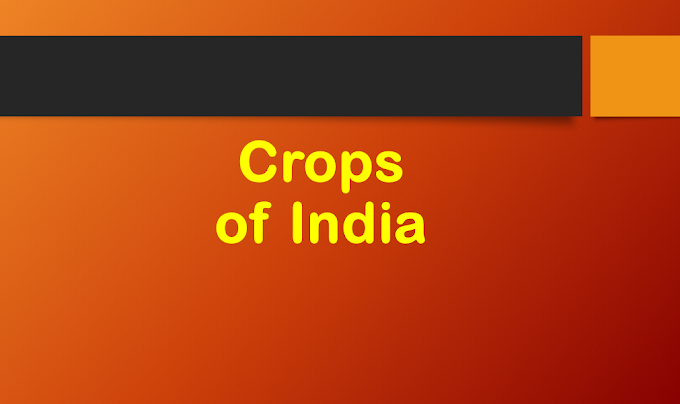India is an agriculturally diverse country with a wide range of crops grown in different regions. Some of the main crops grown in India include:
Crops of India
1. Rice: Rice is the most important food crop in India and is grown in almost all parts of the country. It is the main staple food for millions of people and is grown in both rainfed and irrigated areas.
2. Wheat: Wheat is the second most important food crop in India and is grown mostly in the northern and northwestern parts of the country.
3. Sugarcane: Sugarcane is an important cash crop in India, grown mostly in the northern and southern regions of the country. It is used to produce sugar, jaggery, and ethanol.
4. Cotton: Cotton is an important cash crop in India, grown mostly in the northern and western regions of the country. It is used to produce textiles, clothing, and other fabrics.
5. Jute: Jute is an important cash crop in India, grown mostly in the eastern and northeastern regions of the country. It is used to produce burlap, twine, and other products.
6. Tea: Tea is an important cash crop in India, grown mostly in the northeastern and southern regions of the country. India is one of the largest producers of tea in the world.
7. Coffee: Coffee is an important cash crop in India, grown mostly in the southern regions of the country. India is one of the major coffee producers in the world.
8. Oilseeds: Oilseeds are important cash crops in India, grown mostly in the central and southern regions of the country. These include groundnut, rapeseed, mustard, and soybean.
9. Spices: India is known for its spices and is one of the largest producers and exporters of spices in the world. Some of the important spices grown in India include pepper, cardamom, cinnamon, cloves, nutmeg, and ginger.
10. Fruits and vegetables: India is also known for its horticultural crops, grown in many regions of the country. These include mango, banana, apple, orange, tomato, potato, and onion.
It's worth noting that the variety of crops grown in India depends on the region's climate, topography, and soil. Additionally, due to increasing population and changing dietary habits, there has been a shift in the cropping pattern in recent years.
11. Pulses: Pulses are important crops in India, grown mostly in the central and southern regions of the country. These include lentils, peas, and beans. They are an important source of protein for vegetarians and are widely used in Indian cuisine. Pulses: Pulses are important crops in India, grown mostly in the central and southern regions of the country. These include lentils, peas, and beans. They are an important source of protein for vegetarians and are widely used in Indian cuisine.
12. Millets: Millets are traditional crops grown in India, mostly in the drier regions of the country. These include sorghum, pearl millet, and finger millet. These crops are drought-resistant and are known for their nutritional values.
13. Oil palm: Oil palm is an important cash crop in India, grown mostly in the southern regions of the country. It is used to produce vegetable oil, which is used for cooking and in the production of biofuels.
14. Rubber: Rubber is an important cash crop in India, grown mostly in the southern regions of the country. It is used to produce rubber products, such as tires, footwear, and other industrial products.
15. Bamboo: Bamboo is an important cash crop in India, grown mostly in the northeastern regions of the country. It is used to produce a wide range of products, including paper, furniture, and construction materials.
It's worth noting that India's agricultural sector is facing various challenges, such as climate change, land degradation, water scarcity, and labor shortage. Despite these challenges, India continues to be an important agricultural producer, with a wide range of crops and a large agricultural workforce.Millets: Millets are traditional crops grown in India, mostly in the drier regions of the country. These include sorghum, pearl millet, and finger millet. These crops are drought-resistant and are known for their nutritional values.






